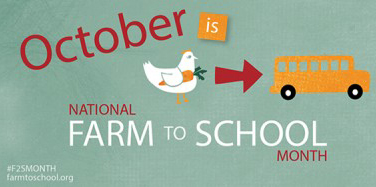By Elisha Smith, elishas@cfra.org, Center for Rural Affairs
October is National Farm to School month (#F2SMonth). “Farm to School” refers to schools serving local, farm-fresh foods ranging from fruits and veggies to honey and meat.
The more local foods we serve our kids, the better. One-third of U.S. children are obese or overweight, and only 2% of children get the recommended serving of fruits and vegetable each day. Farm to School programs increase students’ daily fruit and vegetable consumption significantly.
Moreover, each dollar invested into Farm to School stimulates an additional $2.16 of local economic activity. In Maine, shifting 1% of consumer expenditures to direct purchasing of local products was shown to increase incomes of Maine farmers by as much as 5%. And each new Farm to School job contributes to the creation of addition 1.67 jobs.
Often schools incorporate curriculums that help students learn about nutrition, agriculture, science, math and the path that food takes from the farm to the table as well as creating experience-based learning opportunities by visiting farms and participating in gardening, recycling, and entrepreneurial programs.
The Farm to School concept is simple: bring tasty, nutritious food from the people who grow it to the school kids that want to eat it. The details involved in making this a reality can be daunting, however. With that in mind the Center for Rural Affairs has put together a Farm to School Month Starter Kit, guide and several other resources to help wade through all the complexities. Visit http://www.cfra.org/f2s.

